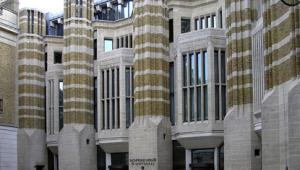By Richard Johnstone | 12 December 2013
Ministers have been warned that public sector pay restraint could leave some government bodies struggling to recruit and retain staff.
The Institute for Fiscal Studies said pay projections set out by the Office for Budget Responsibility in last week’s Autumn Statement suggested public sector pay would fall by 8 percentage points between 2012/13 and 2018/19, relative to the private sector.
This means that the public sector pay premium, which initially grew to 20% after the financial crisis, will return to pre-recession levels this year – two years earlier than previously forecast – before falling further.
Chancellor George Osborne implemented a two-year public sector pay freeze as part of his deficit reduction plan in 2011/12 and 2012/13. Since April, annual increases have been limited to 1%, and Osborne said in the Autumn Statement he was considering ways to continue consolidation beyond the end of the restrictions in 2015/16.
The average ‘raw’ public pay premium, without adjusting for any worker characteristics, is now projected to fall below 15% within the next two years, today’s IFS observation stated.
When a similar low level was last seen in the early 2000s, parts of the public sector had difficulties recruiting and retaining staff and this could be repeated, IFS report authors Jonathan Cribb and Luke Sibieta said.
‘If the current forecasts are correct and private sector earnings growth continues to be higher than public sector earnings, some public sector employers may well find it increasingly difficult to retain and recruit high-quality workers,’ they stated.
In taking pay decisions, both the government and public sector pay review bodies should pay ‘great attention’ to any indicators that the public sector is facing difficulties in recruiting and retaining high-quality staff, Cribb and Sibieta added.
When public sector pay had been forecast to return to its pre-crisis level relative to private sector pay by 2015/16, squeezing salaries may have been a relatively easy way to cut departmental spending, the authors said. However, as this trend had quickened, the choices for government were now harder.
‘If that leads the government to want to mitigate the squeeze in public sector pay but to keep workforce costs as planned it would have to absorb even more cuts to the size of the workforce, beyond the cuts of more than 1.1 million already planned between 2010/11 and 2018/19.’





















